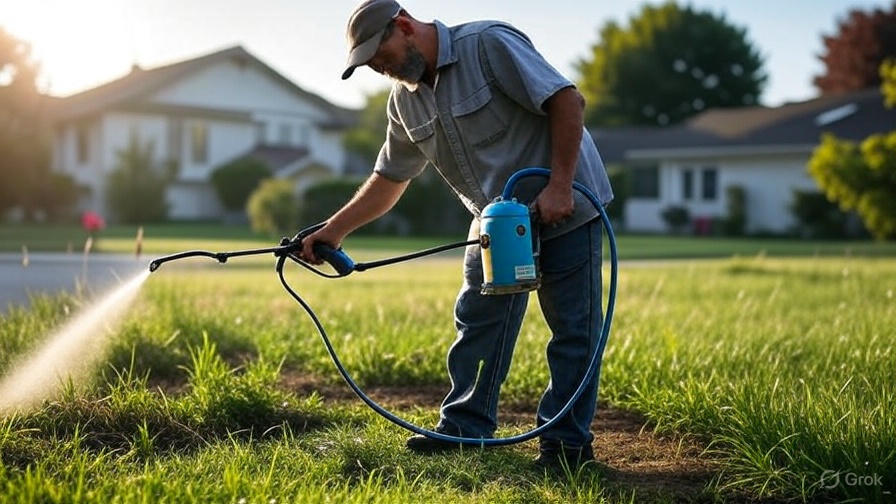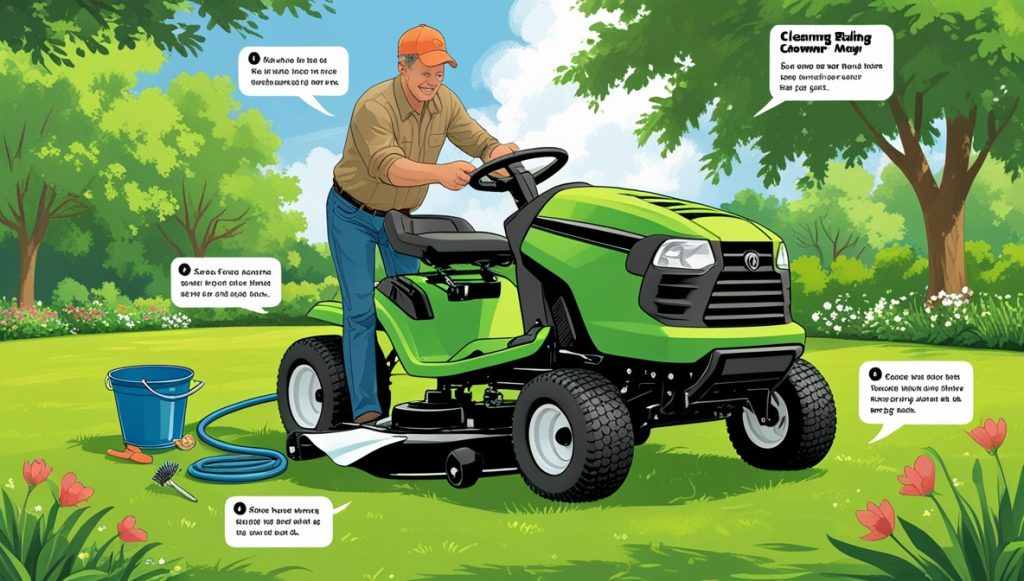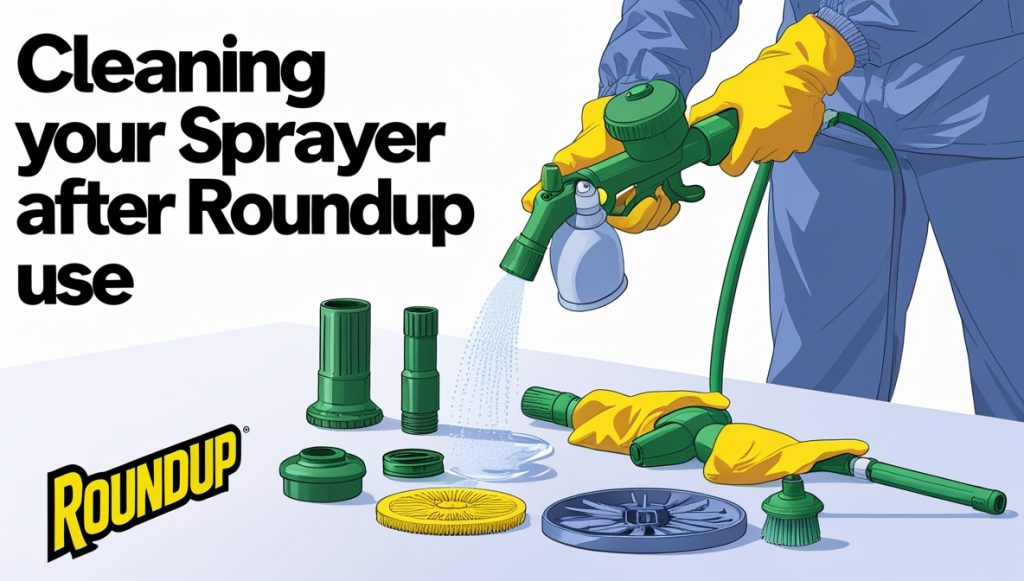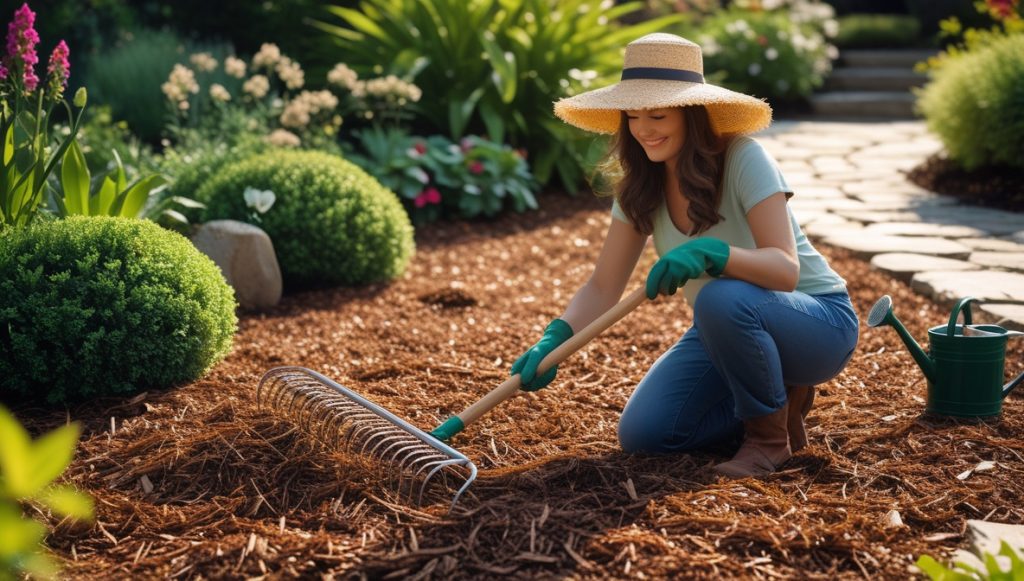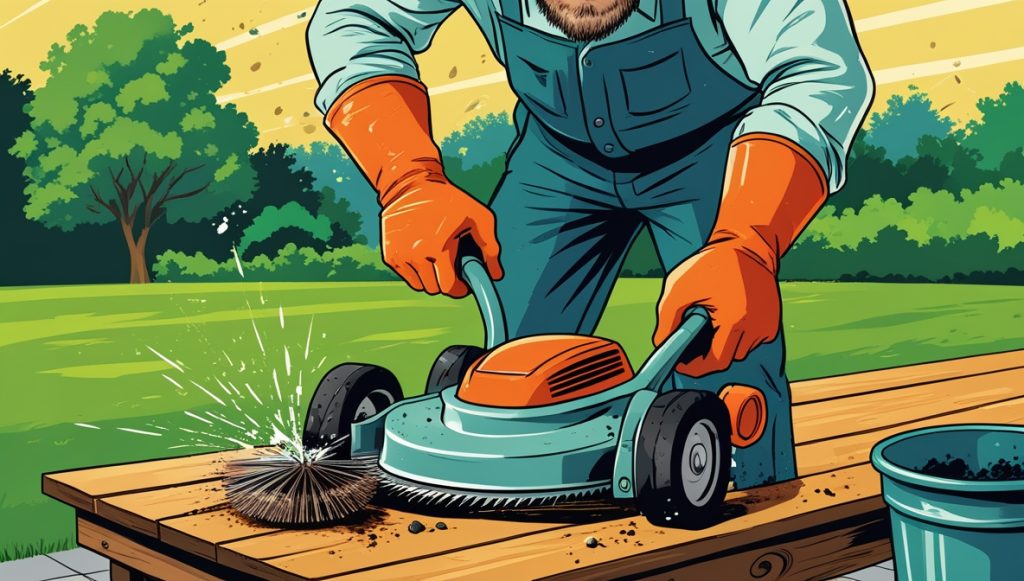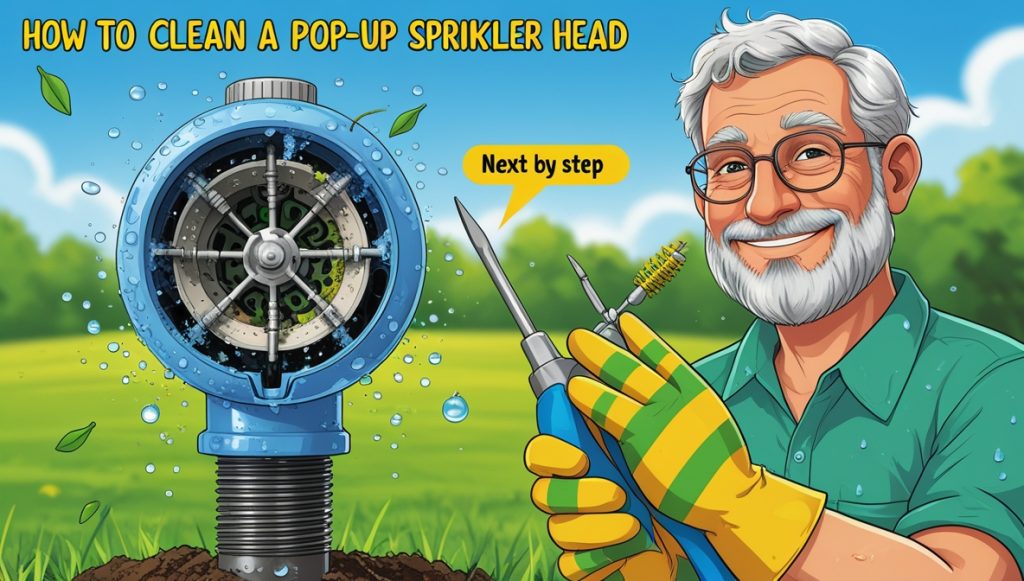Every homeowner faces the same frustrating question when tackling weeds: should you spray the entire plant or focus on the roots? This simple question opens up a complex world of herbicide science, application techniques, and plant biology that can make or break your weed control efforts.
The short answer changes everything you think you know about weed killer application. Most herbicides work best when you spray the leaves and stems, not the roots. This counterintuitive fact surprises many gardeners who assume targeting the root system delivers the knockout punch.
Understanding proper herbicide application saves you time, money, and prevents the headache of watching weeds return stronger than before. Let’s dive deep into the science behind effective weed control and discover why your application method determines success or failure.
Contents
- How Herbicides Actually Work in Plants
- The Science Behind Leaf Absorption
- Why Spraying Leaves Beats Root Treatment
- Different Herbicide Types Require Different Strategies
- Proper Herbicide Application Techniques
- Weather Conditions That Affect Success
- Common Application Mistakes That Reduce Effectiveness
- Special Considerations for Tough Weeds
- Timing Your Herbicide Applications
- Safety Considerations for Herbicide Use
- Environmental Impact and Responsible Use
- Measuring Success and Follow-up Actions
- Cost-Effective Weed Control Strategies
- Conclusion: The Right Approach for Lasting Results
How Herbicides Actually Work in Plants
Plants transport nutrients and chemicals through two main highway systems. The xylem carries water and minerals from roots to leaves, while the phloem moves sugars and other compounds throughout the plant. These transport systems hold the key to understanding herbicide effectiveness.
Systemic herbicides enter through leaf surfaces and travel through the phloem to reach all plant parts, including roots. Contact herbicides burn whatever they touch but don’t move through the plant’s transport system. This fundamental difference explains why application location matters so much.
Glyphosate, the most common systemic herbicide, enters through leaf stomata and moves to growing points throughout the plant. When you spray only the soil around roots, you miss the primary entry point entirely. The herbicide sits in dirt while the weed continues growing above ground.
Root absorption occurs with some pre-emergent herbicides, but these products prevent seed germination rather than kill established weeds. Established weeds have developed root systems that often resist chemical penetration from soil-applied treatments.
The Science Behind Leaf Absorption
Leaf surfaces contain thousands of microscopic pores called stomata that open and close to regulate water loss and gas exchange. These same pores provide the main entry point for systemic herbicides into the plant’s circulatory system.
Waxy leaf coatings called cuticles protect plants from water loss but can also block herbicide penetration. Young, tender leaves absorb chemicals more readily than older, waxy leaves. This explains why timing your herbicide application affects results dramatically.
Temperature and humidity influence stomata behavior and chemical absorption rates. Cool, humid mornings often provide ideal conditions for herbicide uptake because stomata remain open longer and evaporation rates stay low.
Surfactants in herbicide formulations help break down waxy barriers and improve chemical penetration through leaf surfaces. These soap-like compounds increase the herbicide’s ability to stick to and penetrate plant tissues.
Why Spraying Leaves Beats Root Treatment
Leaf application delivers herbicide directly to the plant’s photosynthesis factories where energy production occurs. Disrupting this process starves the entire plant, including the root system you want to eliminate.
Soil application faces numerous obstacles that reduce effectiveness. Clay particles bind herbicide molecules, organic matter breaks down chemicals, and soil microorganisms metabolize active ingredients before roots can absorb them.
Water movement in soil dilutes herbicide concentrations and carries chemicals away from target root zones. Rain or irrigation after soil application often washes herbicides into groundwater rather than plant roots.
Root barriers like bark, cork layers, and protective sheaths limit chemical absorption in many mature plants. These natural defenses evolved to protect plants from soil-borne toxins but also block herbicide uptake.
Different Herbicide Types Require Different Strategies
Contact herbicides like diquat and paraquat burn plant tissues on contact but don’t move through the plant’s transport system. These products require complete coverage of above-ground plant parts to achieve control. Missing spots means the weed survives and regrows.
Systemic herbicides such as glyphosate, 2,4-D, and triclopyr enter the plant and move to all tissues including roots. You don’t need complete coverage with systemic products, but you do need enough leaf contact to get lethal doses into the plant’s system.
Pre-emergent herbicides like pendimethalin and prodiamine work in soil to prevent seed germination. These products require soil application and work best when incorporated into the root zone through watering or rainfall.
Post-emergent herbicides target growing weeds and require foliar application for maximum effectiveness. Soil application of post-emergent products wastes money and delivers poor results.
Proper Herbicide Application Techniques
Start with early morning or late evening applications when temperatures stay cool and winds remain calm. These conditions minimize herbicide drift and maximize absorption time before evaporation occurs.
Cover leaf surfaces thoroughly but avoid runoff that wastes product and potentially harms nearby plants. The goal is complete wetting without creating puddles or drips that roll off target weeds.
Use appropriate spray nozzles that produce medium-sized droplets. Fine droplets drift in wind while large droplets bounce off leaves without adequate coverage. Medium droplets stick to surfaces and provide optimal absorption.
Add spray dye to herbicide mixtures to track coverage and avoid missing spots or double applications. This simple addition helps ensure uniform treatment and prevents waste.
Weather Conditions That Affect Success
Rain within six hours of herbicide application washes chemicals off leaf surfaces before absorption occurs. Check weather forecasts and avoid applications when precipitation threatens.
High temperatures above 85°F increase evaporation rates and reduce absorption time. Hot conditions also stress plants and may trigger protective responses that limit herbicide uptake.
Strong winds create drift problems and uneven coverage patterns. Wind speeds above 10 mph make precise application nearly impossible and increase risks to non-target plants.
Humidity levels between 40-60% provide ideal conditions for herbicide absorption. Very low humidity increases evaporation while very high humidity may prevent proper droplet formation.
Common Application Mistakes That Reduce Effectiveness
Spraying during plant stress periods when weeds aren’t actively growing limits herbicide translocation to root systems. Drought-stressed plants shut down transport processes that move herbicides throughout the plant.
Using wrong spray volumes either wastes product through runoff or provides inadequate coverage for effective control. Follow label recommendations for carrier volumes specific to your target weeds and application method.
Mixing herbicides with hard water reduces effectiveness because mineral ions bind active ingredients. Use water conditioners or distilled water when treating with sensitive herbicide formulations.
Tank mixing incompatible products can cause chemical reactions that destroy active ingredients or create plant injury. Always check compatibility before combining different herbicides or additives.
Special Considerations for Tough Weeds
Large, established weeds require higher herbicide rates and better coverage than small seedlings. Mature plant tissues resist chemical penetration and require more aggressive treatment approaches.
Waxy weeds like spurge and knotweed benefit from surfactant additions that improve herbicide penetration through protective leaf coatings. These additives significantly improve control of difficult species.
Deep-rooted perennials store energy reserves that help them survive herbicide treatments. Multiple applications timed to deplete energy stores provide better long-term control than single treatments.
Grass weeds require specialized herbicides that target grass-specific growth processes. Broadleaf herbicides often fail against grassy weeds because of fundamental biological differences.
Timing Your Herbicide Applications
Spring applications target weeds during peak growth periods when herbicide translocation rates reach maximum levels. Active growth ensures rapid movement of chemicals to root systems.
Fall treatments work well for perennial weeds preparing for winter dormancy. These plants actively transport sugars to root storage organs, carrying herbicides along for the ride.
Avoid applications during flowering because plants redirect energy toward reproduction rather than vegetative growth. This shift reduces herbicide movement and limits effectiveness.
Sequential applications spaced 2-4 weeks apart provide better control of tough perennials than single high-rate treatments. Multiple doses overwhelm plant recovery mechanisms.
Safety Considerations for Herbicide Use
Read product labels completely before mixing or applying any herbicide. Labels contain critical information about proper rates, timing, and safety precautions specific to each product.
Wear appropriate protective equipment including long sleeves, pants, gloves, and eye protection. Chemical exposure through skin contact or inhalation poses serious health risks.
Keep children and pets away from treated areas until sprays dry completely. Many herbicides remain toxic until they dry on plant surfaces or absorb into tissues.
Store herbicides in original containers away from food, feed, and water sources. Proper storage prevents accidental poisoning and maintains product effectiveness.
Environmental Impact and Responsible Use
Choose herbicides with low environmental persistence that break down quickly in soil and water. Products with shorter half-lives reduce long-term contamination risks.
Avoid applications near water sources including wells, ponds, streams, and drainage areas. Herbicide runoff contaminates water supplies and harms aquatic ecosystems.
Use integrated pest management approaches that combine herbicides with cultural controls like mulching, hand-weeding, and competitive plantings. This strategy reduces chemical dependence.
Consider organic alternatives for sensitive areas including beneficial insect habitat, food gardens, and areas used by children and pets. Many natural products provide effective weed control with lower risks.
Measuring Success and Follow-up Actions
Monitor treated areas weekly to assess herbicide effectiveness and identify weeds that require retreatment. Early detection of surviving weeds allows prompt follow-up applications.
Document successful treatments including products used, rates applied, weather conditions, and results achieved. This information helps refine future weed control strategies.
Plan follow-up applications for weeds that show resistance or incomplete control. Sequential treatments often succeed where single applications fail.
Implement prevention strategies in successfully treated areas including mulching, overseeding, and regular monitoring to prevent weed reestablishment.
Cost-Effective Weed Control Strategies
Calculate treatment costs per square foot to compare different herbicide options and application methods. Include product cost, labor time, and equipment expenses in your analysis.
Buy herbicides in appropriate quantities to minimize waste from expired products. Most herbicides maintain effectiveness for several years when stored properly.
Consider hiring professional applicators for large areas or difficult weed problems. Professionals have access to restricted-use products and specialized equipment that improve results.
Invest in quality spray equipment that provides accurate rates and uniform coverage. Good equipment pays for itself through improved results and reduced product waste.
Conclusion: The Right Approach for Lasting Results
Successful weed control depends on understanding how herbicides work and applying them correctly. Spraying leaves and stems rather than roots delivers better results because most herbicides enter plants through leaf surfaces and move throughout the plant via the transport system.
The science behind herbicide absorption clearly shows that foliar applications outperform soil treatments for established weeds. This knowledge transforms your approach from guesswork to targeted, effective weed management.
Remember that timing, weather conditions, and proper technique matter as much as product selection. Combining scientific understanding with careful application practices creates the foundation for long-term weed control success.
Your next weed control project starts with this knowledge. Apply herbicides to leaves and stems, choose appropriate products for your target weeds, and time applications for maximum effectiveness. These principles will transform your results and save you time, money, and frustration in your ongoing battle against unwanted plants.
